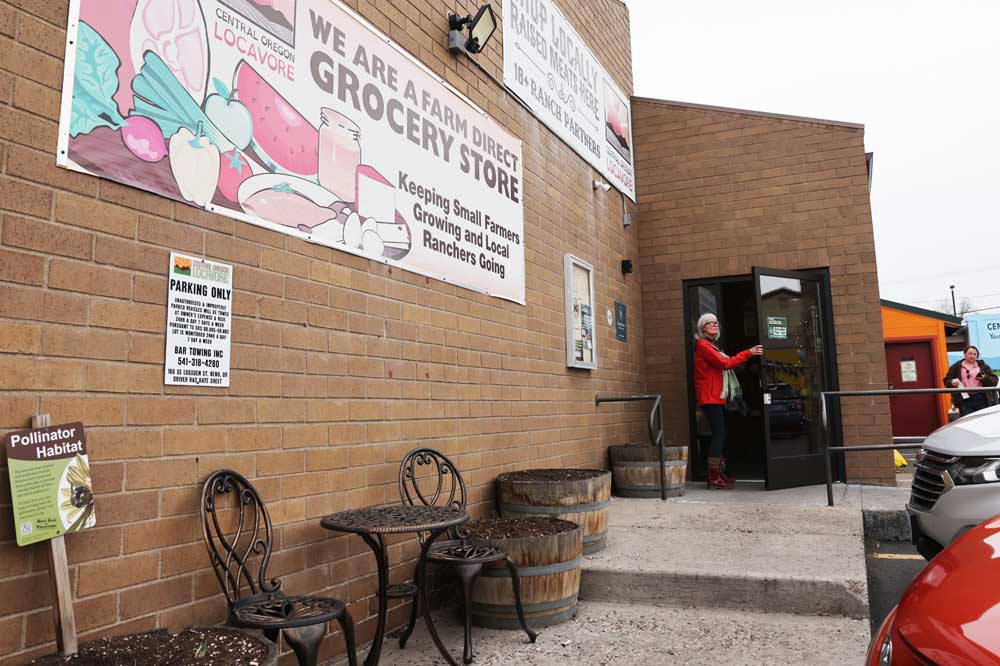Prices of locally-sourced food remain steady for Central Oregon small businesses
Published 5:30 am Friday, January 3, 2025

- Patrons enter Central Oregon Locavore in Bend.
While food prices have steadily risen nationally, costs have been less volatile for small businesses in Central Oregon that source food locally. Within the local economy, prices are more notably affected by geography, climate and labor costs.
The model at Central Oregon Locavore is to purchase food from producers at a high price while selling at an affordable price for community members, said Lexie Houchins-Park, outreach coordinator at the organization.
The nonprofit, indoor farmers market is designed to operate at a loss. It also affords wiggle room. When avian flu drove up egg prices in 2022, Locavore had the capacity to keep its eggs more reasonably priced, she said.
“We have some really hardworking, brilliant farmers and ranchers out there. They’re really dedicated to making and keeping food affordable. They’re community members, so they see the importance of that,” Houchins-Park said.
More Coverage: Diversification breeds success but not affordability
The local food system
Locavore partners with ranchers, such as Casad Family Farms in Madras. Casad is a closed-loop farm system, which grows grains and cover crops that feed its livestock. Similarly, Powell Butte’s Whitaker Livestock Co. is close to operating as a closed-loop farm, a model that has further protected it from price swings on the global market.
It remains to be seen what will unfold in 2025, but Houchins-Park has watched Locavore’s customer base grow in recent years, along with a flourishing demand for local food.
For every dollar spent on locally produced food, 76 cents stays in the local economy, compared to 24 cents when purchasing imported goods, according to a feasibility study conducted by the Central Oregon Intergovernmental Council.
“We want to see local food become the norm. We want to see local food be affordable for every Central Oregonian. We want to see our farmers and ranchers living prosperous lives,” Houchins-Park said. “We’re in this for the long haul.”
More Coverage: What will be hot in the culinary space in 2025?
Predictions for 2025
Joe Kim shops around for the best prices for raw goods, like any consumer. As the owner of Bend Korean restaurant, Yoli, he’s noticed the standard seasonal fluctuations. But for the most part, prices of raw goods haven’t risen as quickly as labor costs have — a variable intricately linked to the cost of housing.
Kim is noticing younger diners opting to share entrees or order non-alcoholic drinks, in part to cut down on the bill. He estimates he’s sold more non-alcoholic beer at Yoli since it opened in 2022 than during his 12-year tenure at 5 Fusion & Sushi Bar.
In 2025, he predicts the emergence of a greater variety of ethnic restaurants with a focus on regions or microregions. He wouldn’t be surprised if another Korean restaurant opened in Bend, or an eatery catering to the cuisines of Malaysia, Indonesia or a regionally-specific Mexican or Thai restaurant.
Kim also expects food carts to continue to grow in popularity, as the casual dining option is flexible for groups who may not all arrive at the same time or be interested in ordering the same type of food. Counter-service dining merits less of a tip and a time commitment.
However, he is wary that Central Oregon’s growth may lend itself to chain restaurants.
“To a certain extent, I think Bend is going to lose some of the small town feel, where you know the owners or the company is from Central Oregon, or even Oregon,” Kim said.






